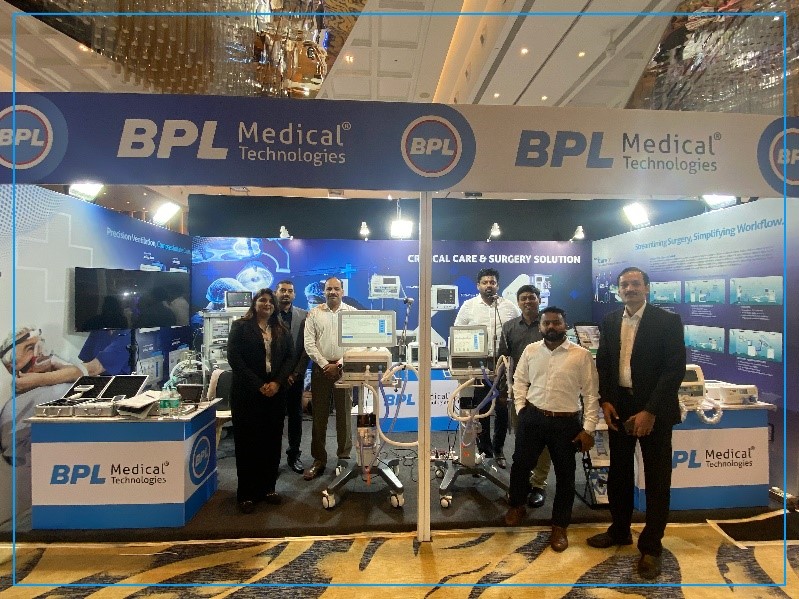Mr. Sudeep Kolte – VP Sales & Marketing, Saint Gobain India Pvt Ltd – Gyproc Business
Mr. Sudeep Kolte is currently the VP Sales & Marketing, Saint Gobain India Pvt. Ltd. – Gyproc Business. A Bachelor in Engineering and Post Graduate from the Indian Institute of Management, Sudeep joined Saint-Gobain in 2015.Prior to his

Mr. Sudeep Kolte is currently the VP Sales & Marketing, Saint Gobain India Pvt. Ltd. – Gyproc
Business.
A Bachelor in Engineering and Post Graduate from the Indian Institute of Management, Sudeep
joined Saint-Gobain in 2015.Prior to his role at Saint-Gobain, Sudeep was Vice President Sales & Marketing – Consumer
Paints at Kansai Nerolac Pvt. Ltd. Additionally, Sudeep has served as Portfolio Manager – Asia
Pacific & Middle East and previously, as Vice President Sales – B2C at Shell.Sudeep has been in the sales and marketing field for almost 20 years, at various levels – from
Functional Head to a Whole Time Director to a Business Head.His robust knowledge entails Business & Strategic Leadership, Brand Stewardship and
Channel Management and is coupled with exposure to optimizing sales and marketing
operations, supply chain space, consumer orientation & B2B
Embracing Healthcare architecture for enhanced patient care
Healthcare architecture has undergone significant transformations in recent years, as the industry recognises the crucial role that the built environment plays in patient care. The design of healthcare facilities has evolved beyond mere functionality to focus on creating healing spaces that promote patient well-being and contribute to improved health outcomes. With advancements in sustainable development, quality design, and innovative solutions healthcare architecture is revolutionising patient care and creating safer, more hygienic environments.
One of the key principles driving healthcare architecture is the concept of healing spaces. These are environments that are carefully designed to promote a sense of calm, comfort, and well-being for patients. Research has shown that the physical surroundings can have a significant impact on patients’ mental and emotional states, ultimately influencing their recovery and overall health. Healthcare architects now consider factors such as natural light, views of nature, colour schemes, and acoustics to create spaces that reduce stress and promote healing.
Sustainable development is another crucial aspect of modern healthcare architecture. The industry is increasingly embracing environmentally friendly practices that not only reduce the ecological footprint but also contribute to patient well-being. Green building materials, energy-efficient systems, and waste reduction strategies are integrated into the design process to create sustainable healthcare facilities. These practices not only benefit the environment but also create healthier indoor spaces by minimising the presence of harmful substances and improving air quality.
In addition to the above, quality design is also an important factor to consider in healthcare architecture, as it ensures that facilities are not only functional and efficient, but also safe for both patients and healthcare professionals. These design principles extend beyond the layout and structure of the building to include the selection of furniture, fixtures, and equipment. It is essential that these elements are durable, easy to clean, and maintain.
Therefore, hospitals must prioritise the use of furniture and fixtures that are dedicated to maintaining hygiene standards, capable of combating dangerous microbes, and specifically designed for healthcare centres. An example of such a product is Asepta, which happens to be an innovative addition to Saint Gobain’s line of gypsum tiles. Asepta provides hospital ceilings with a smooth, wipeable surface and contains an integral Biocide that protects the surface from the growth of bacterial species. Asepta has been rigorously tested according to ISO 22196:2011/JIS 2801 and catering to Risk Zone-4 as per NF S 90-351 standards. It has demonstrated an impressive 99.9% kill rate for microbes within just 24 hours. Hence, by incorporating quality design principles and utilising specialised products like Asepta, healthcare facilities can ensure that their architecture promotes cleanliness, safety, and overall well-being for everyone within their premises.
In conclusion, adopting the above-mentioned design principles can not only improve health outcomes but also support hospitals in thriving at a time when patients are increasingly looking for information to help them make decisions about where to receive their medical care. Consumers usually think of factors like whether a facility has designated walking spaces to speed recovery and shorten hospital stays or waiting areas that don’t feel like bus stops. Hence design features play a big role in their decision making. Additionally, some customers will take into account broader social factors in their decisions, such as the facility’s ties to the community and reputation for providing health rather than just medical care.






